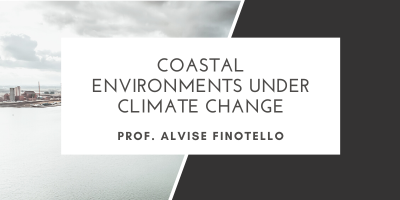Coastal Environments Under Climate Change

Period: first semester
Course units contents:
- Morphodynamics and biogemorphodynamics. Introduction to Coastal Environments and Global Change.
- Relative sea level and its variations.
- Environmental Control: Geology and Sediments
- Drivers: Waves and Tides
- Coastal Hazards: Storms and Tsunamis
- Beaches and Coastal Dunes
- Barrier Island Systems
- Tidal Flats, Salt Marshes and Mangrove Forests
- Estuaries and Tidal Inlets
- River Deltas
- Coping with Coastal Change: General effects of a rising sea level. Natural and anthropogenic forcings. Effects of a changing climate. Effects on lagoons, deltas, and estuaries
- A case study: The Venice Lagoon and its morphological evolution during the past centuries. Will Venice survive? (0.5 CFU).
- (optional: Rock Coasts and Coral Reefs)
Planned learning activities and teaching methods:
Lectures focused on theoretical aspects and their practical applications;
In-class exercises using simple analytical and numerical models to study the evolution of complex systems, with particular emphasis on coastal morphodynamics;
Laboratory activities involving small-scale physical experiments;
Educational field trips: two excursions—one to the Venice Lagoon and one to the Po River Delta and nearby coastal areas—featuring analysis of characteristic structures of lagoon environments (salt marshes, tidal flats, channels) and fluvio-deltaic systems, in both natural settings and those influenced by human activities.
Teaching methods may be adapted to accommodate specific student needs (e.g., fieldwork limitations) provided that these needs are communicated to the instructor through the appropriate institutional procedures. Similarly, individual and flexible learning paths may be arranged for students with certified SEN or SLD, depending on feasibility and in accordance with institutional policies. In addition to contacting the course instructor, students with disabilities, specific learning disorders, special educational needs, or other health conditions may reach out to the Student Services Office – Inclusion Section to receive more information about available teaching support and tools.
At the end of the course, students will be invited to complete a survey aimed at collecting feedback and suggestions to support the improvement of future editions.
